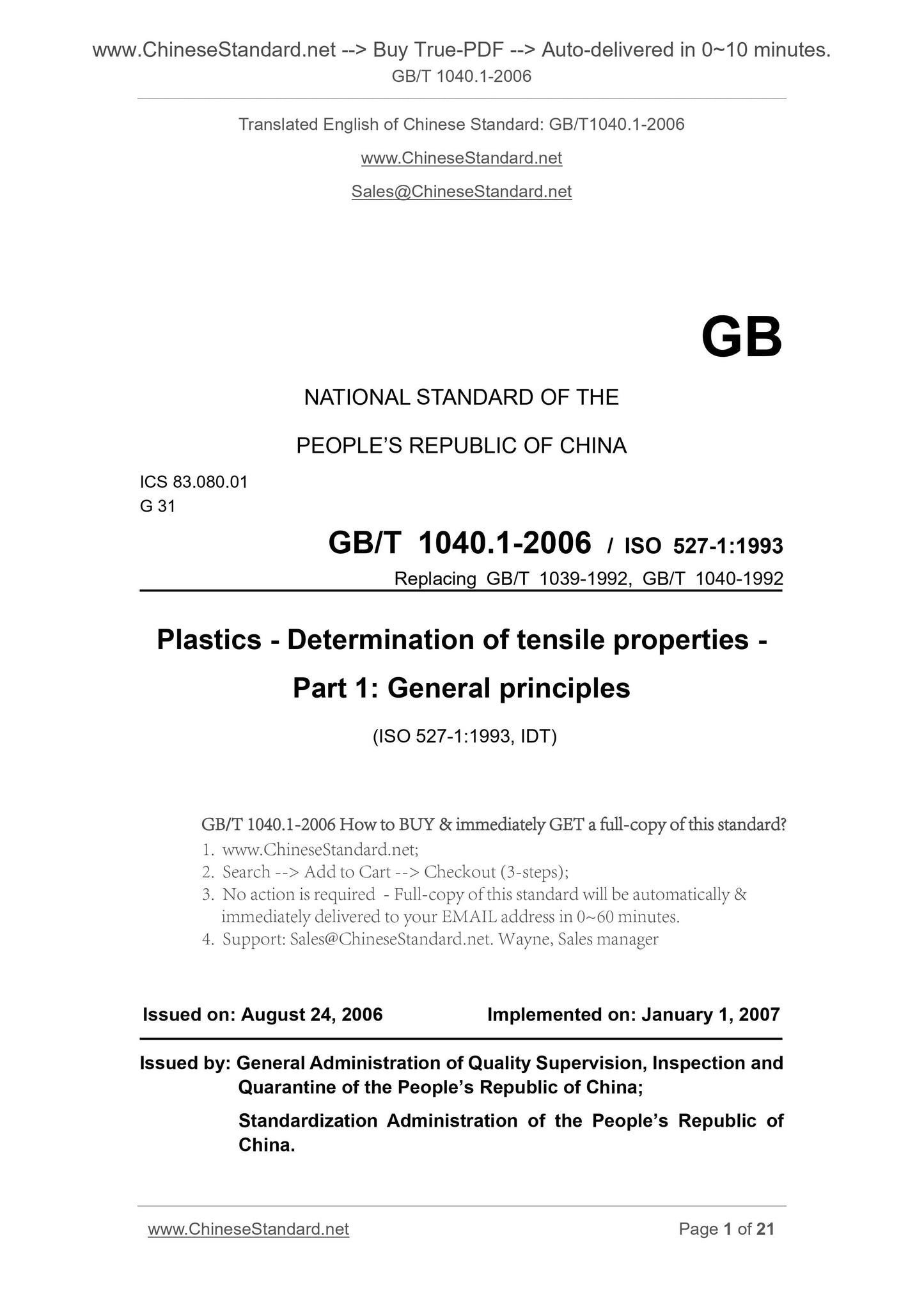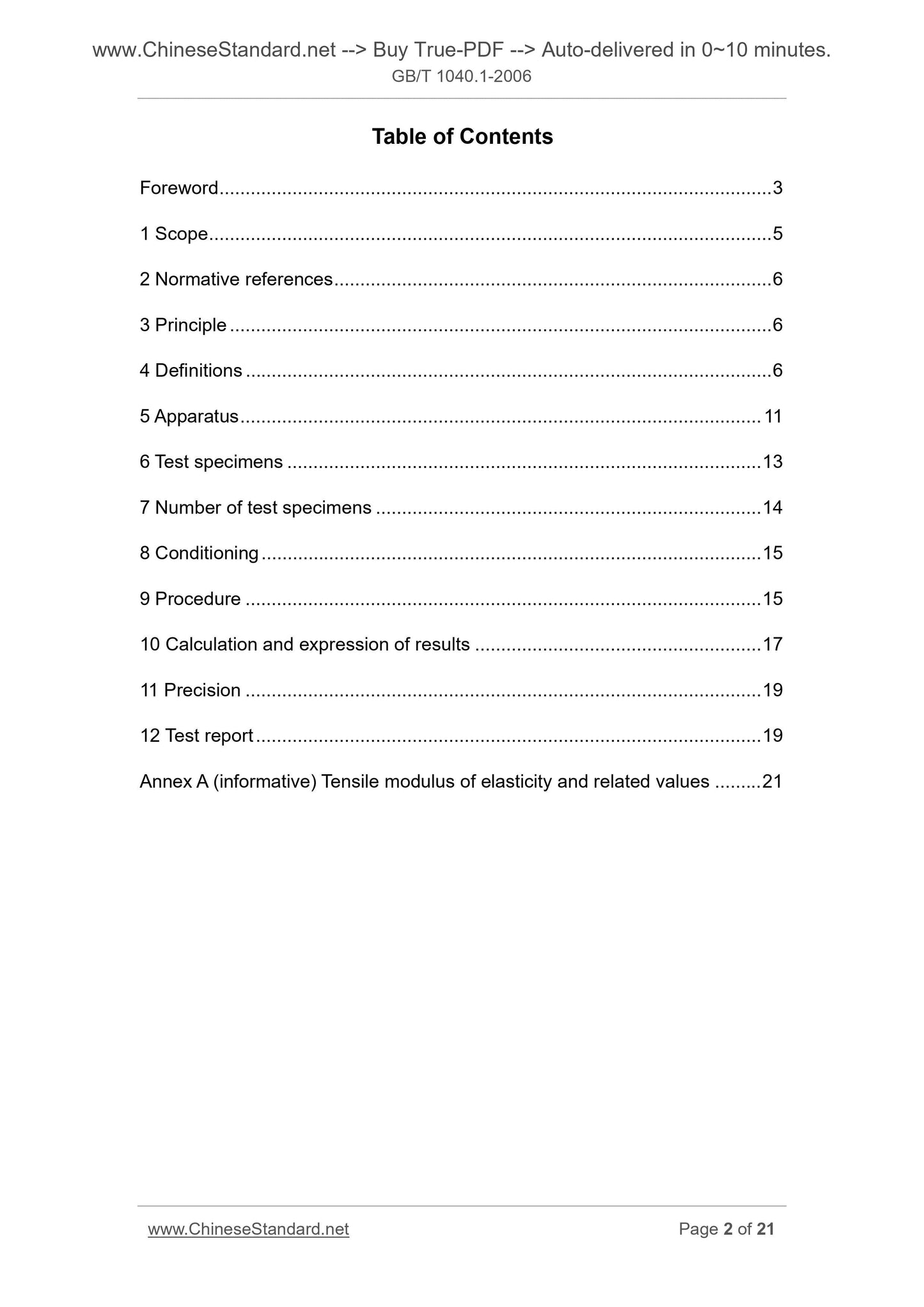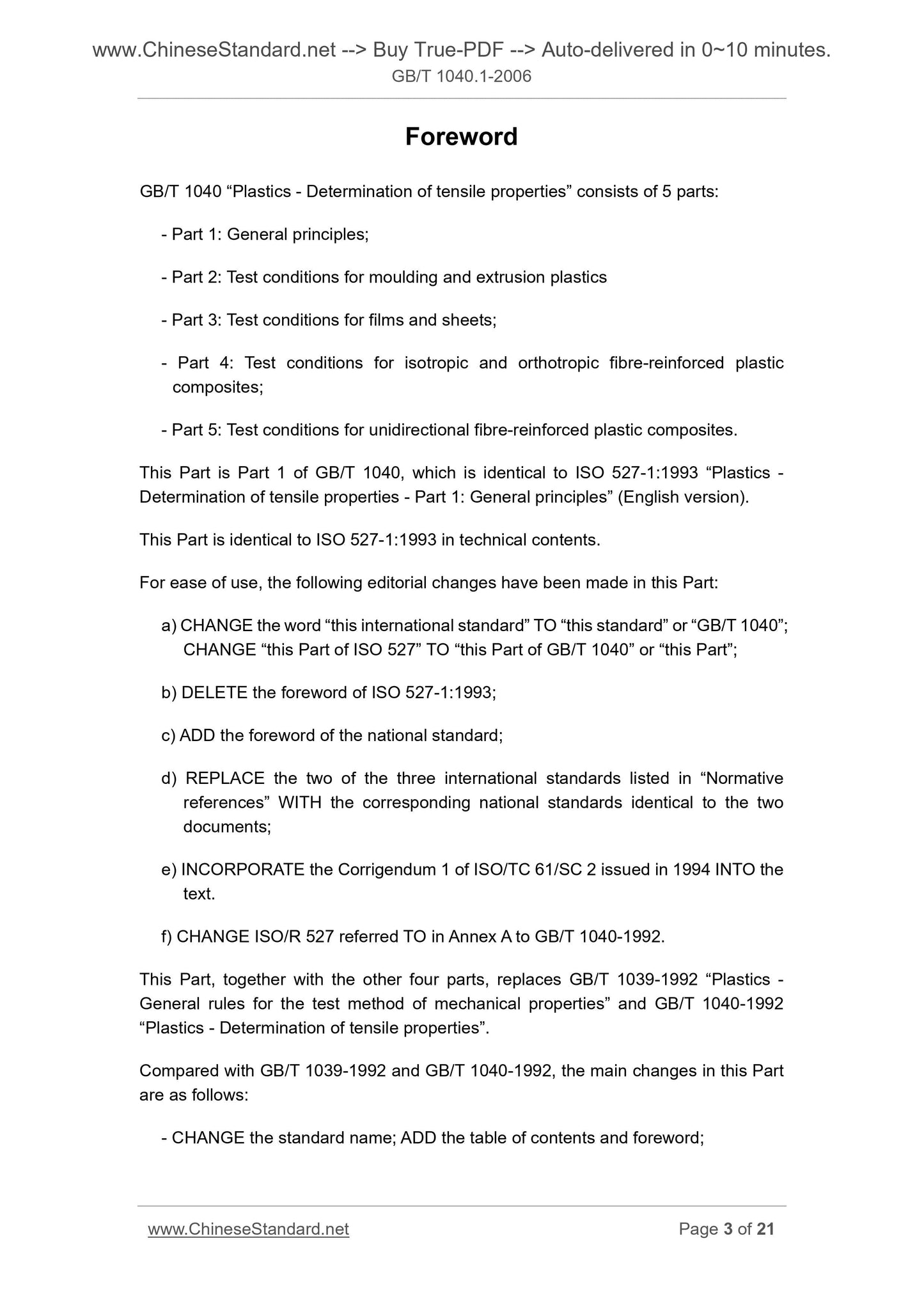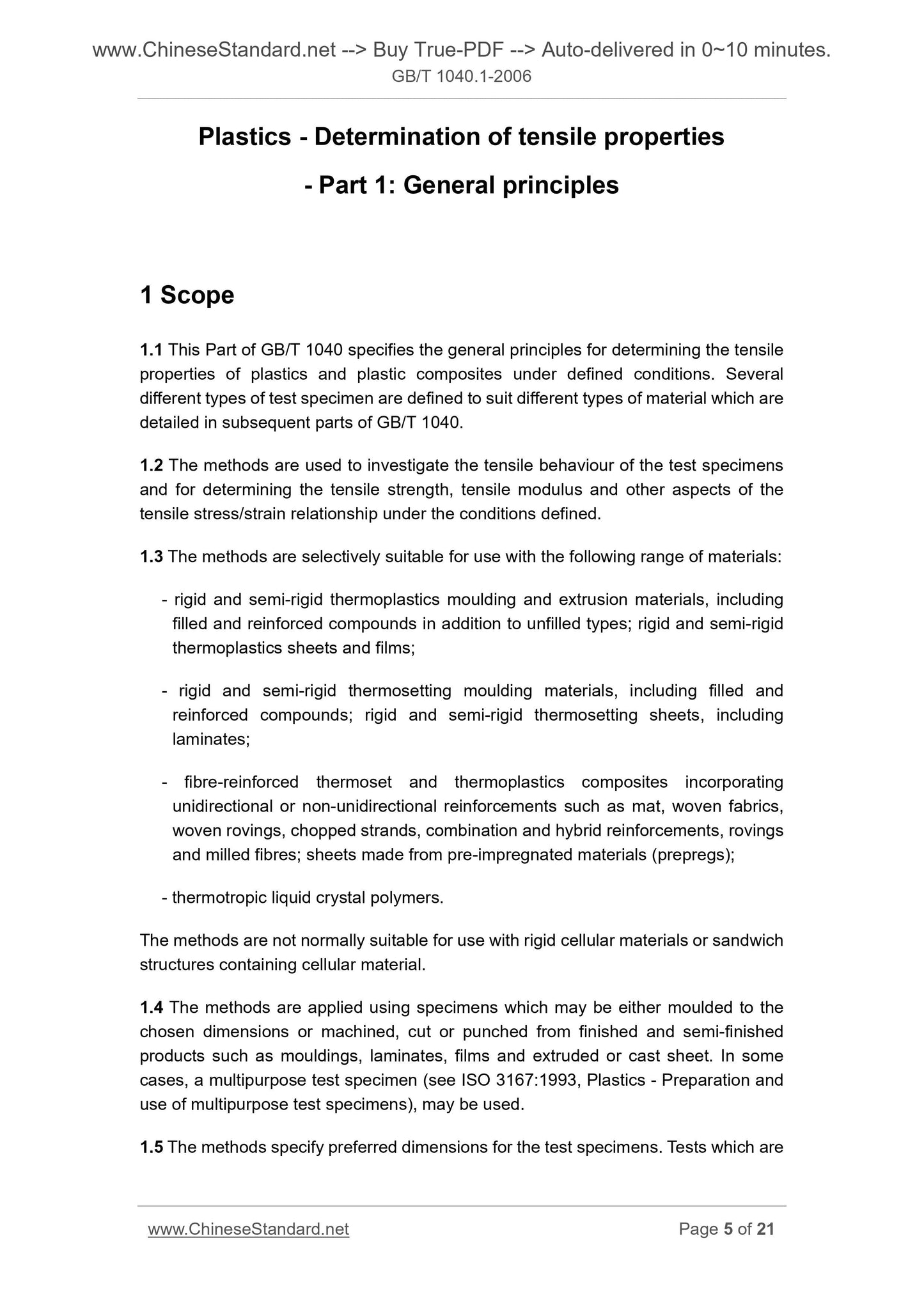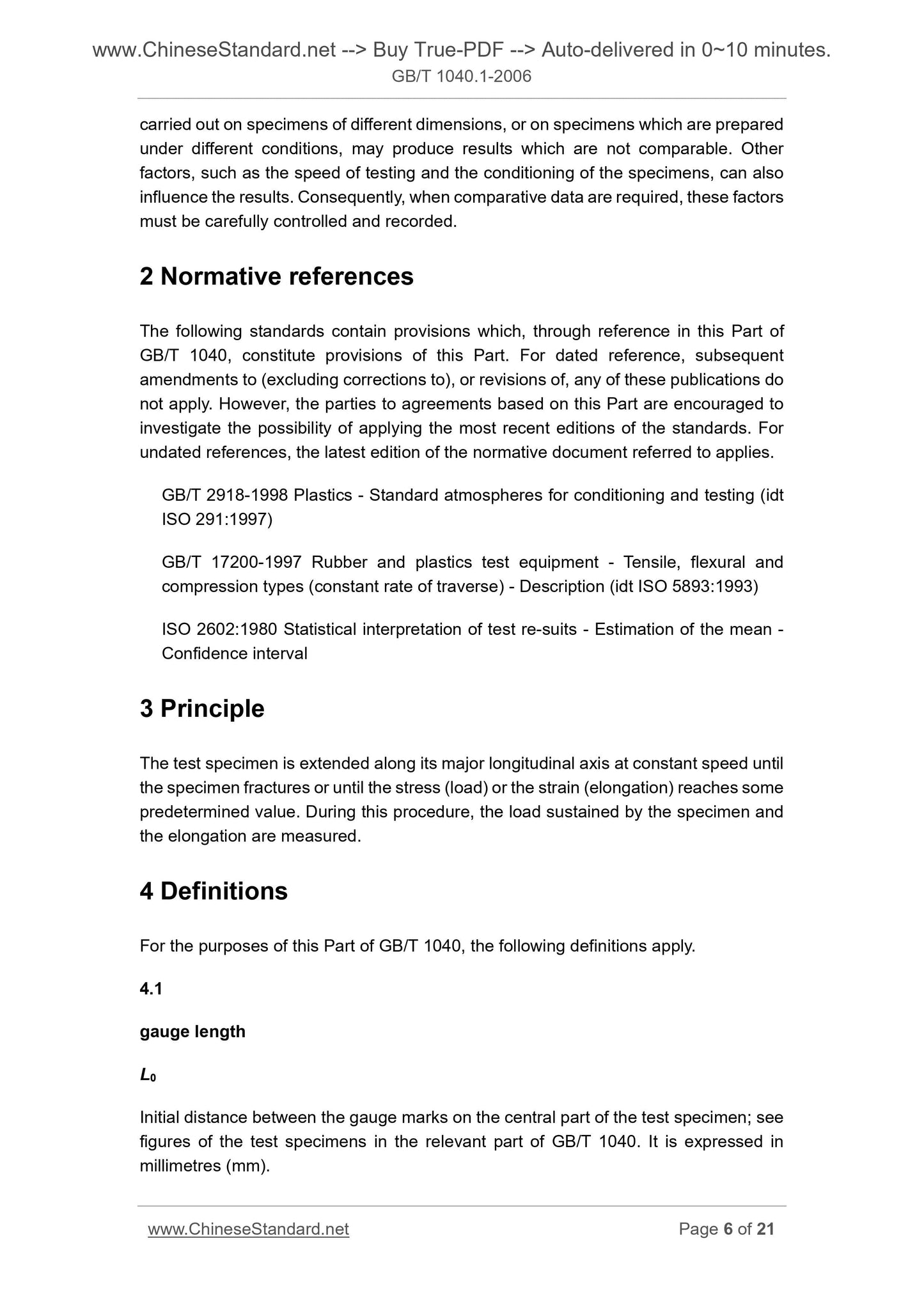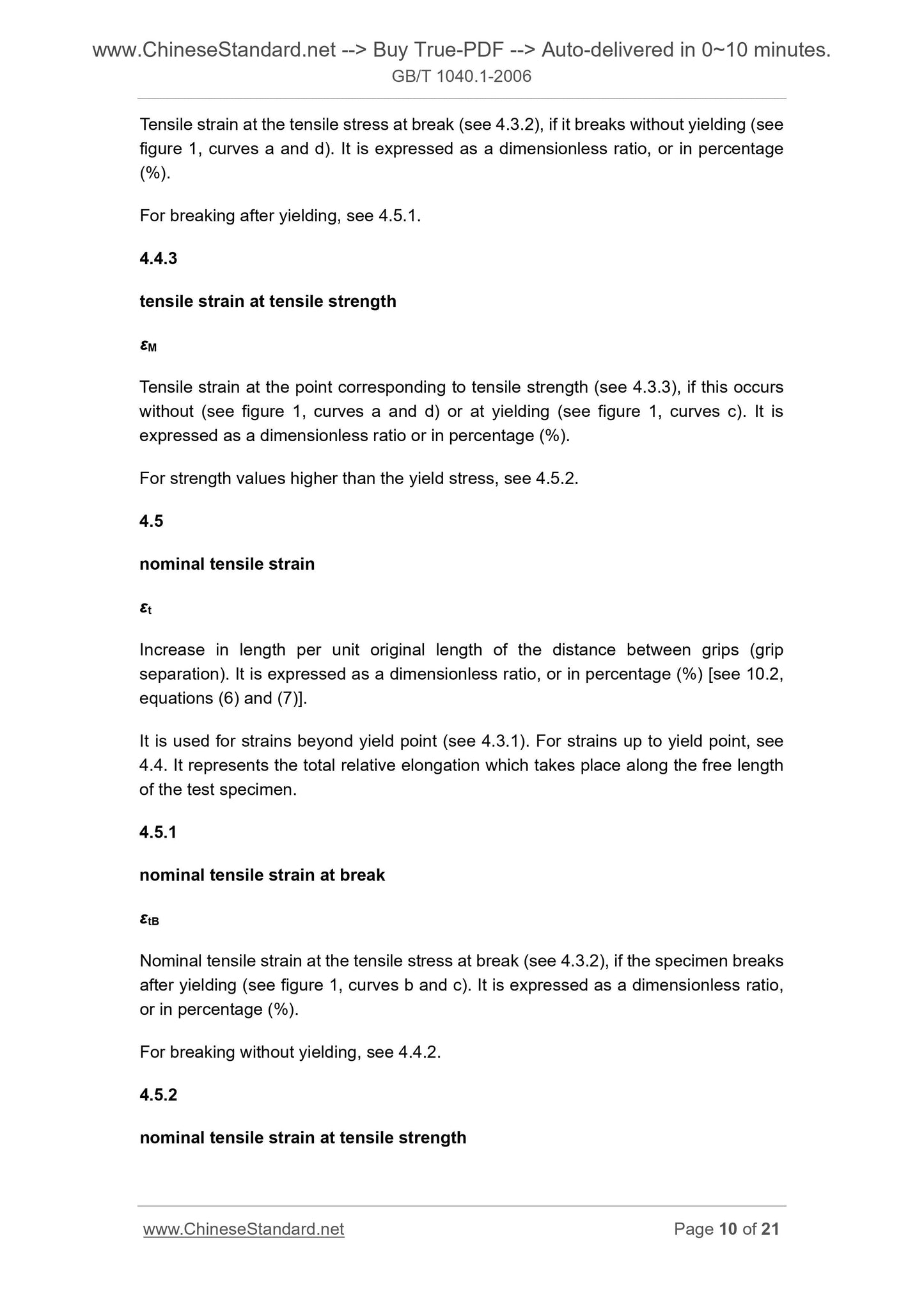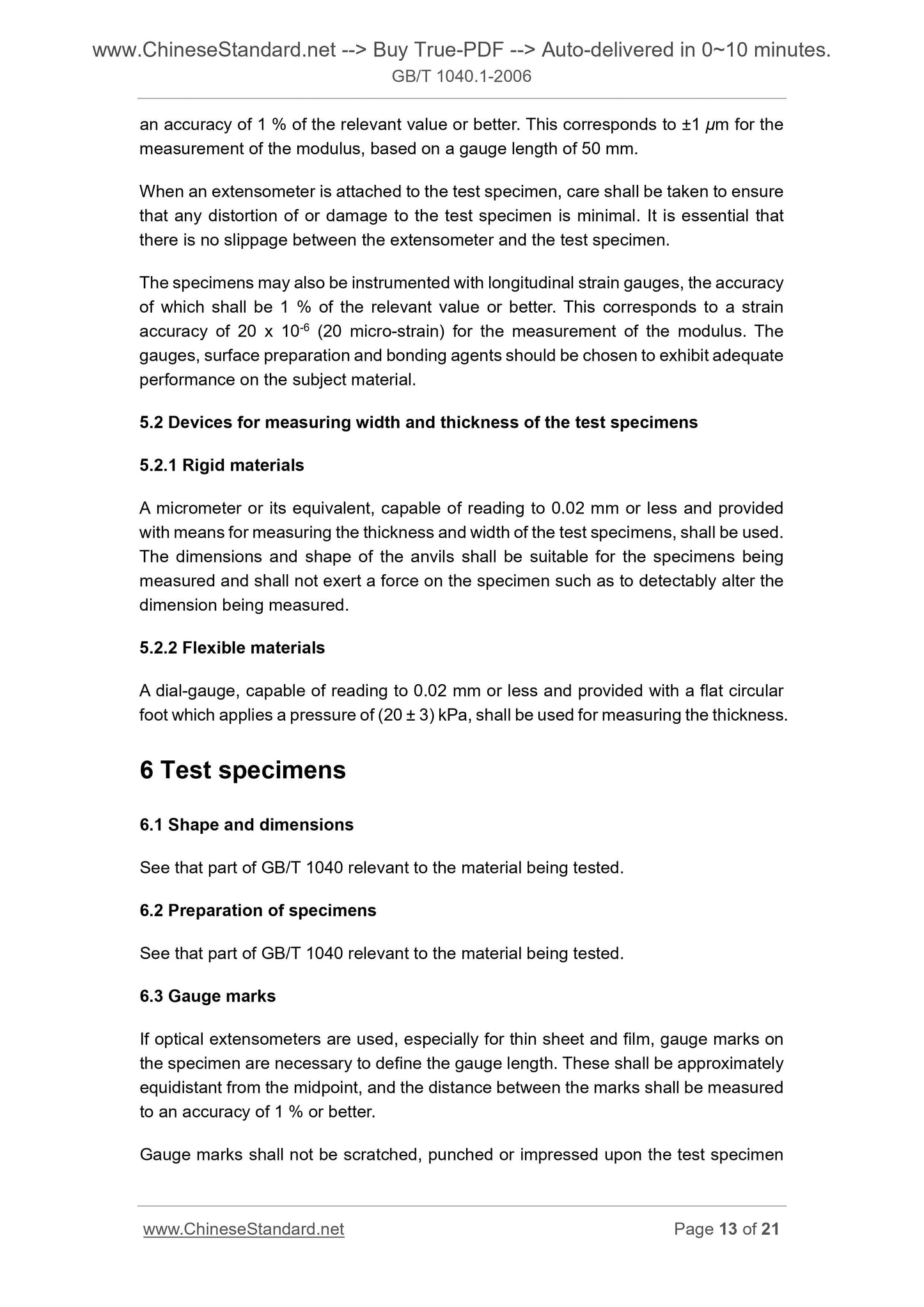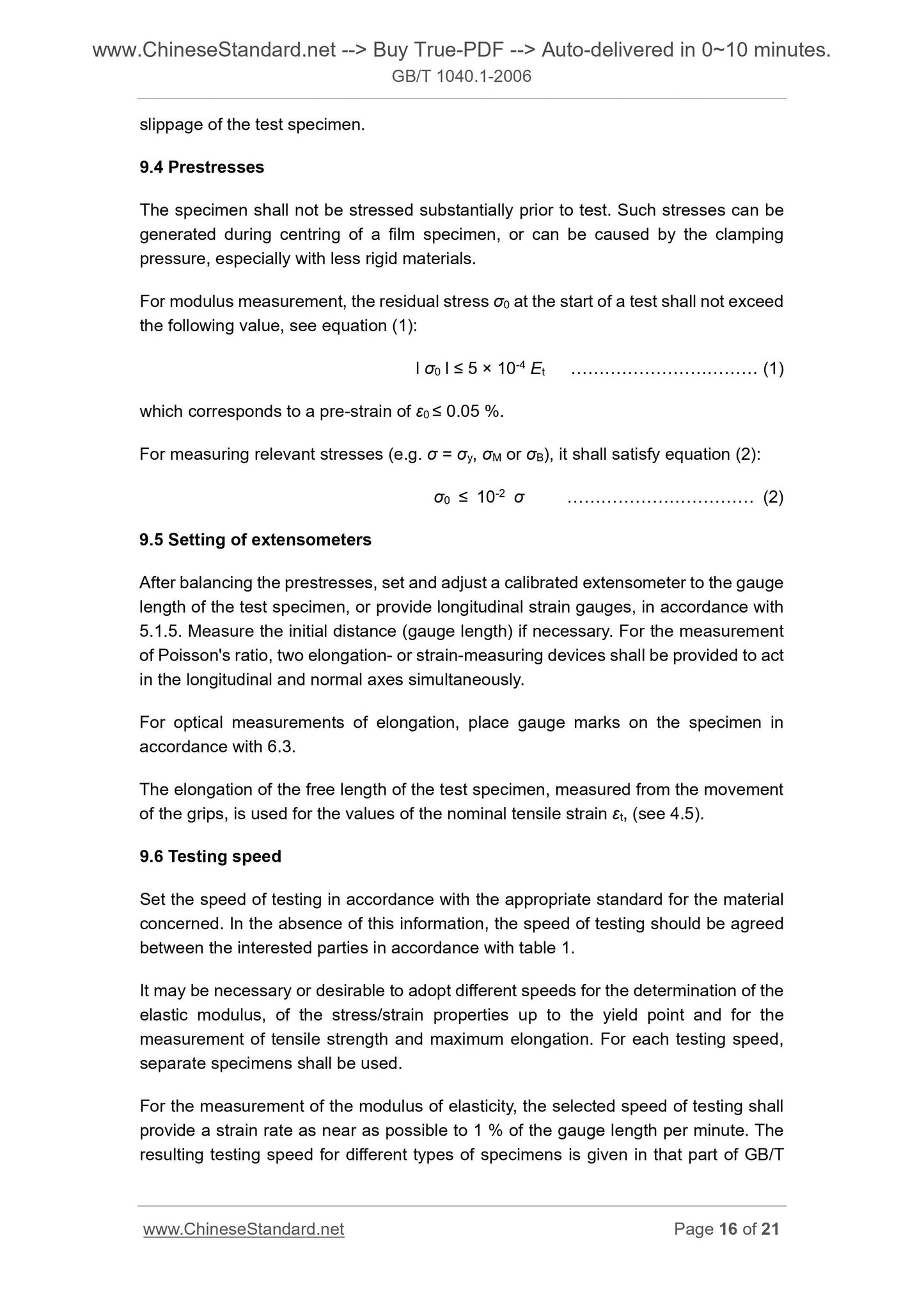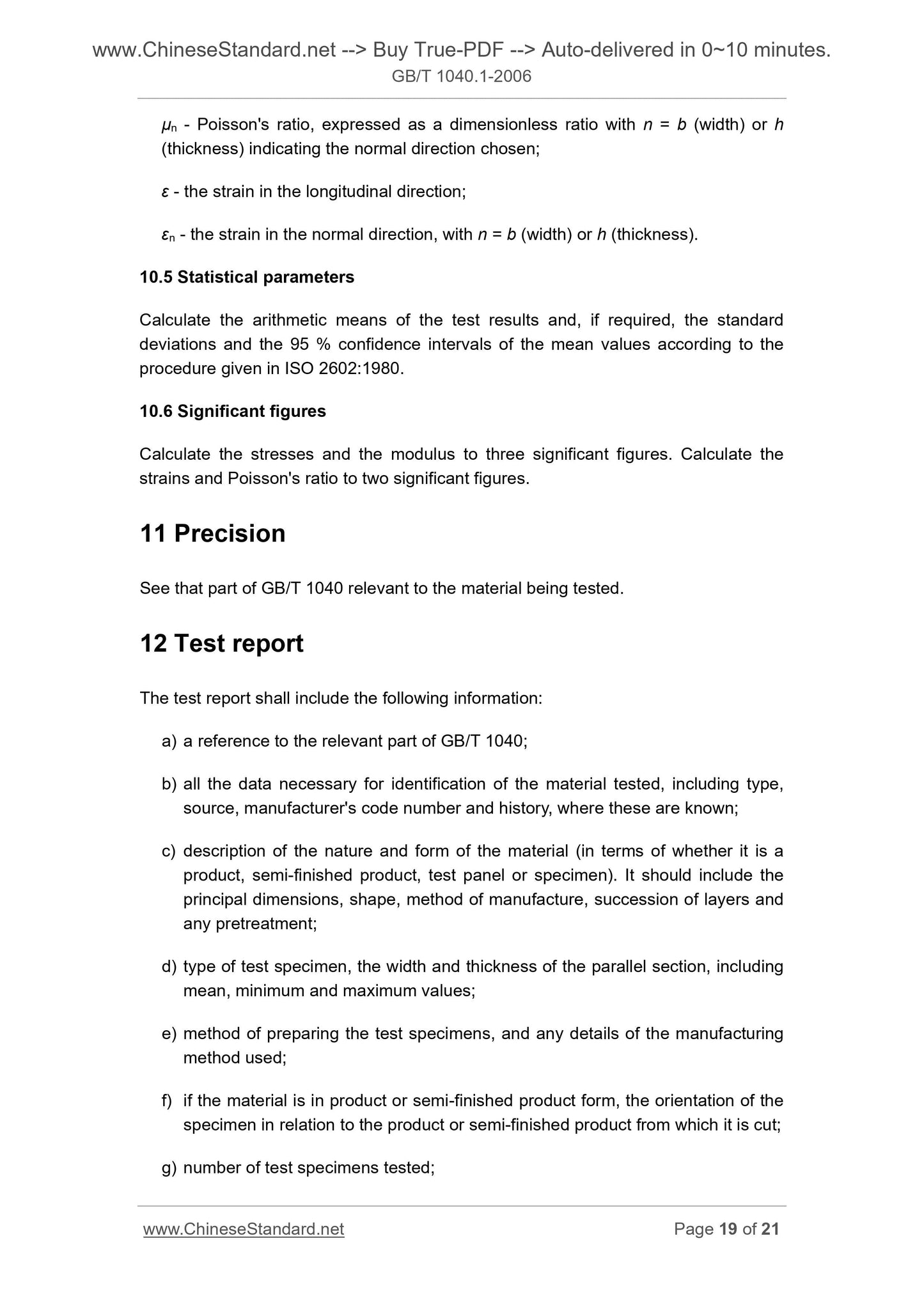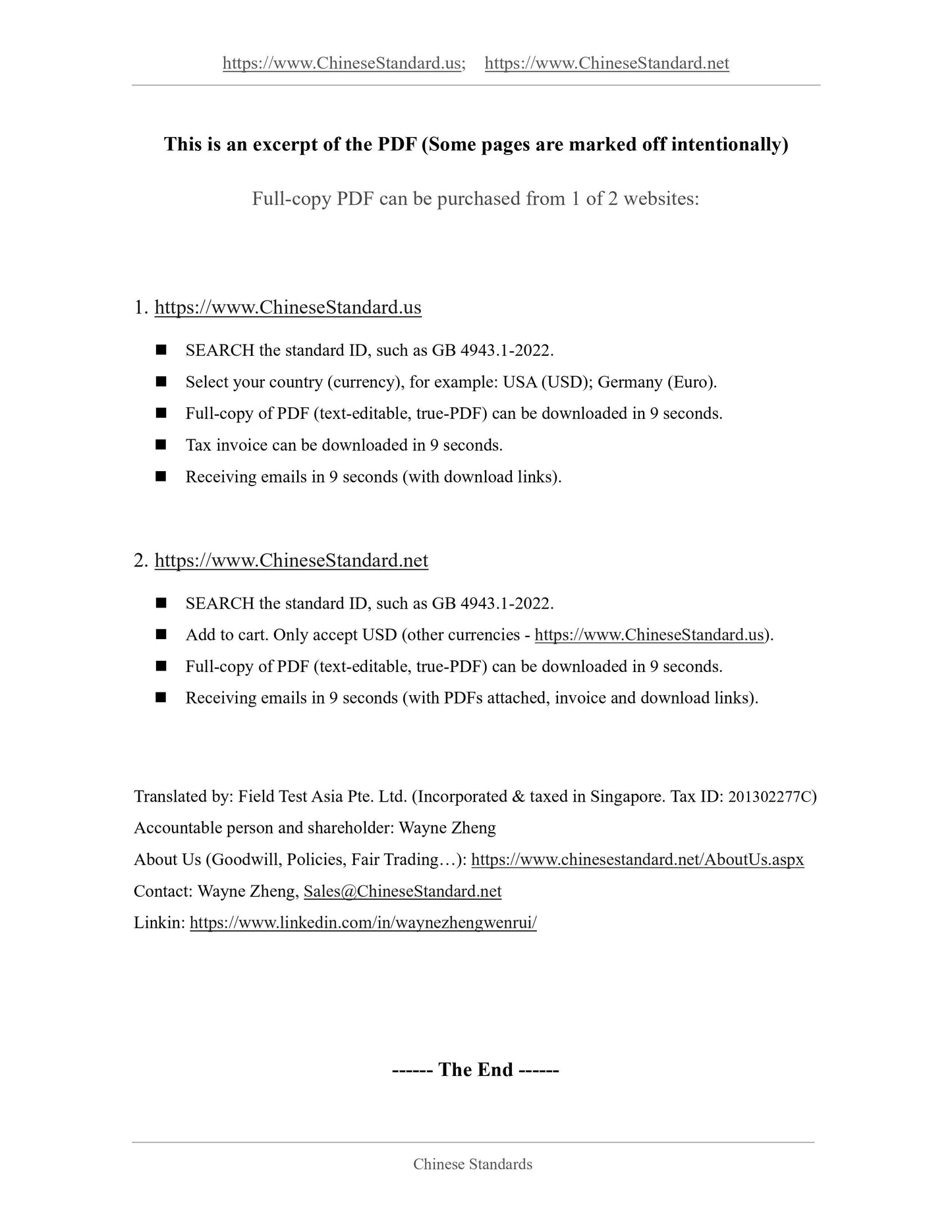1
/
of
10
PayPal, credit cards. Download editable-PDF and invoice in 1 second!
GB/T 1040.1-2006 English PDF (GB/T1040.1-2006)
GB/T 1040.1-2006 English PDF (GB/T1040.1-2006)
Regular price
$85.00
Regular price
Sale price
$85.00
Unit price
/
per
Shipping calculated at checkout.
Couldn't load pickup availability
GB/T 1040.1-2006: Plastics -- Determination of tensile properties -- Part 1: General principles
Delivery: 9 seconds. Download (and Email) true-PDF + Invoice.Get Quotation: Click GB/T 1040.1-2006 (Self-service in 1-minute)
Newer / historical versions: GB/T 1040.1-2006
Preview True-PDF
Scope
1.1 This Part of GB/T 1040 specifies the general principles for determining the tensileproperties of plastics and plastic composites under defined conditions. Several
different types of test specimen are defined to suit different types of material which are
detailed in subsequent parts of GB/T 1040.
1.2 The methods are used to investigate the tensile behaviour of the test specimens
and for determining the tensile strength, tensile modulus and other aspects of the
tensile stress/strain relationship under the conditions defined.
1.3 The methods are selectively suitable for use with the following range of materials.
- rigid and semi-rigid thermoplastics moulding and extrusion materials, including
filled and reinforced compounds in addition to unfilled types; rigid and semi-rigid
thermoplastics sheets and films;
- rigid and semi-rigid thermosetting moulding materials, including filled and
reinforced compounds; rigid and semi-rigid thermosetting sheets, including
laminates;
- fibre-reinforced thermoset and thermoplastics composites incorporating
unidirectional or non-unidirectional reinforcements such as mat, woven fabrics,
woven rovings, chopped strands, combination and hybrid reinforcements, rovings
and milled fibres; sheets made from pre-impregnated materials (prepregs);
- thermotropic liquid crystal polymers.
The methods are not normally suitable for use with rigid cellular materials or sandwich
structures containing cellular material.
1.4 The methods are applied using specimens which may be either moulded to the
chosen dimensions or machined, cut or punched from finished and semi-finished
products such as mouldings, laminates, films and extruded or cast sheet. In some
cases, a multipurpose test specimen (see ISO 3167.1993, Plastics - Preparation and
use of multipurpose test specimens), may be used.
1.5 The methods specify preferred dimensions for the test specimens. Tests which are
carried out on specimens of different dimensions, or on specimens which are prepared
under different conditions, may produce results which are not comparable. Other
factors, such as the speed of testing and the conditioning of the specimens, can also
influence the results. Consequently, when comparative data are required, these factors
must be carefully controlled and recorded.
Basic Data
| Standard ID | GB/T 1040.1-2006 (GB/T1040.1-2006) |
| Description (Translated English) | Plastics -- Determination of tensile properties -- Part 1: General principles |
| Sector / Industry | National Standard (Recommended) |
| Classification of Chinese Standard | G31 |
| Classification of International Standard | 83.080.01 |
| Word Count Estimation | 14,130 |
| Date of Issue | 2006-08-24 |
| Date of Implementation | 2007-01-01 |
| Older Standard (superseded by this standard) | GB/T 1039-1992; GB/T 1040-1992 |
| Quoted Standard | GB/T 2918-1998; GB/T 17200-1997; ISO 2602-1980 |
| Adopted Standard | ISO 527-1-1993, IDT |
| Regulation (derived from) | China Announcement of Newly Approved National Standards No. 10 of 2006 (No. 97 overall) |
| Issuing agency(ies) | General Administration of Quality Supervision, Inspection and Quarantine of the People's Republic of China, Standardization Administration of the People's Republic of China |
| Summary | This standard specifies the determination under specified conditions tensile properties of plastics and composite materials of the general principles and requirements of several samples of different shapes for different types of materials, which in other parts of this standard shall be described in detail. This method is used to study the tensile properties and the tensile strength was measured under specified conditions, tensile modulus and other aspects of the tensile stress/strain relationship. This method is suitable for the following materials: rigid and semi-rigid thermoplastic molding and extrusion materials, in addition to unfilled types of things, including padding and enhanced mix of hard and semi- rigid thermoplastic sheet and film, hard and semi-rigid thermosetting molding materials, including filled and reinforced composite materials, rigid and semi- rigid thermosetting sheet, include laminates, mixed with one or both non-oriented fiber reinforcing material reinforced thermoset and thermoplastic composites, these enhancements materials such as felt, fabric, roving, chopped strand, hybrid fiber reinforced materials, rovings and milled fiber, prepreg sheet materials (prepregs), thermotropic liquid crystal polymers. This method is generally not used in rigid foam material or a microporous material comprising a sandwich structure material. This method can be used for sample size selected molded, but also from moldings, laminates, films, extruded or cast plastic sheets and other finished or semi-finished products using cutting, cutting and other machining method as percent. In some cases, you can use the multipurpose test specimens (see ISO 3167: 1993 " Plastics Preparation and use of multipurpose test specimens "). This method specifies the preferred size of the sample. Different sizes or in samples prepared under different conditions tested, the results |
Share
